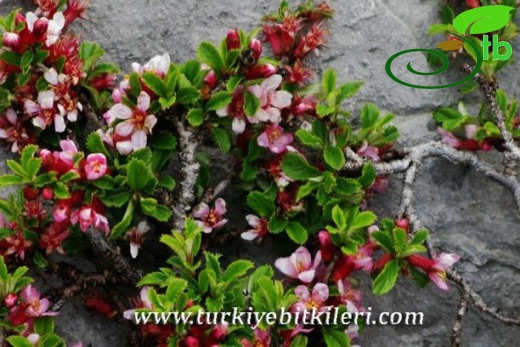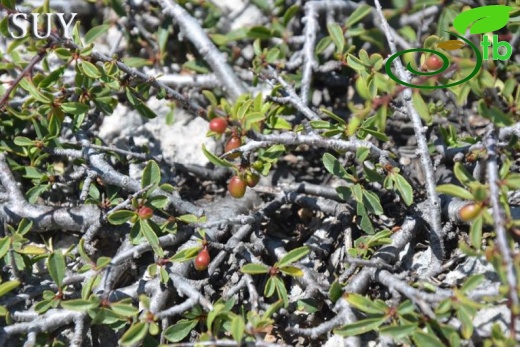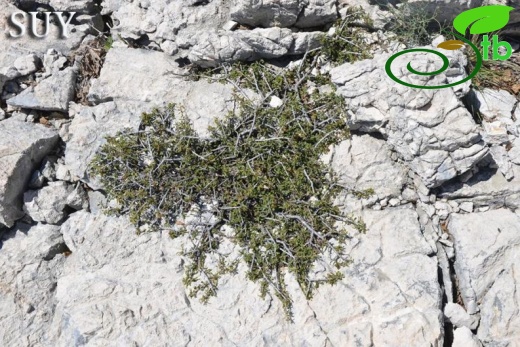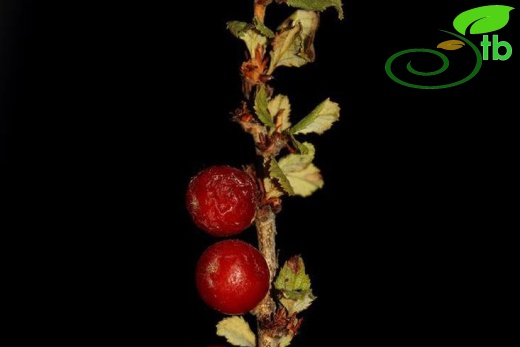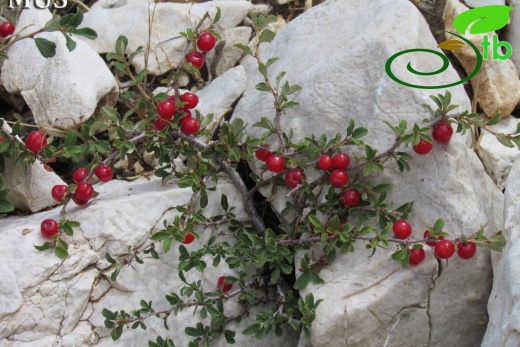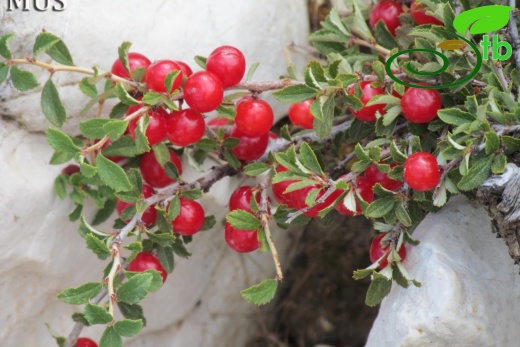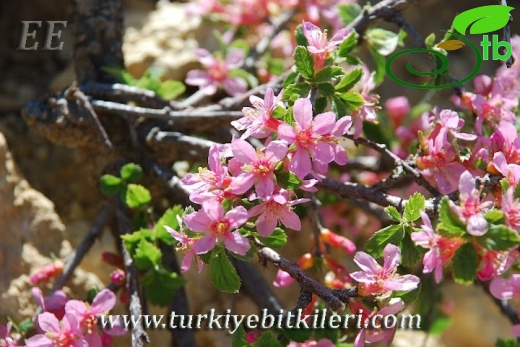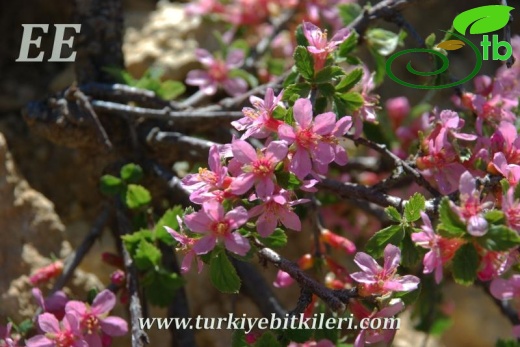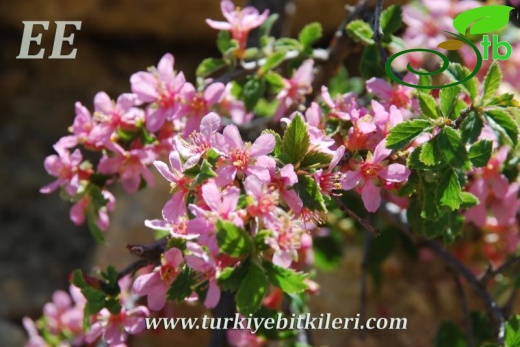Cerasus prostrata
Cerasus prostrata
Taş kirazı
Prostrate or cushion-shaped, unarmed shrub, up to c. 1 m. Young shoots finely puberulent, becoming glabrous. Stipules subulate, persistent. Leaves broadly ovate to elliptic-obovate, 1·5-2,5 x as long as broad, on short shoots usually up to 10-12 mm, on long shoots up to 20 mm, incised-serrate, sometimes canescent-tomentose beneath or lobulate and bilaterally glabrous; petioles 1-2 mm. Flowers usually solitary, on 1-2 mm pedicels; hypanthium broadly cylindrical, 4-5 mm long; petals reddish-pink, 6-7 mm; ovary and style ± glabrous. Drupe subglobose, up to 7 mm diam., glabrous or with few hairs at apex; stone subsulcate.
1. Leaves finely puberulent or glabrous above, grey and dull-tomentose beneath var. prostrata
1. Leaves ± glabrous on both surfaces var. glabrifolia
Distribution of species: S. Europe, W. Syria, N.W. Africa. Medit. element.


